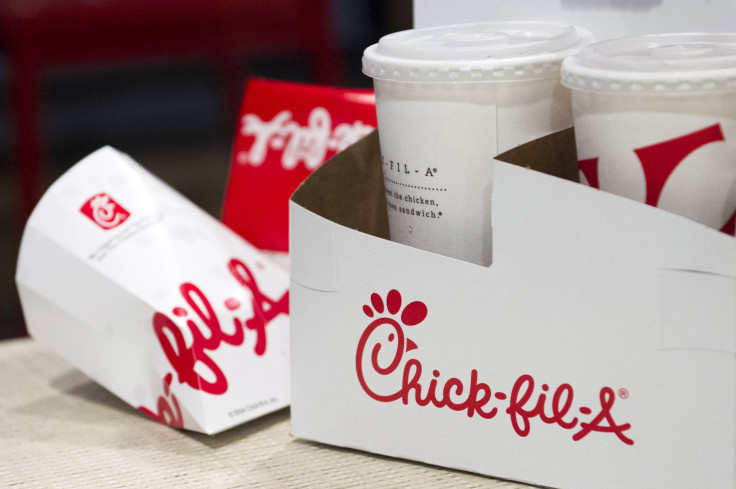How Chick-Fil-A's Social Media Marketing Translated Into Twitter, Facebook and Instagram Success

Waffle fries, chicken sandwiches and nuggets have been a core part of Chick-fil-A’s success, but their online depictions have solidified that success on social media networks. The fast-food company has enticed its consumer base with photos of its top-selling products to rank as the overall favorite brand of 2015 on social media.
Forging past 2012 boycotts from an anti-gay controversy, Chick-fil-A honed its social media presence with an engaging voice, original visual content and timely posts, but experts say the Atlanta-based company's grasp of its consumer base is the kernel of its social network mastery. Six days a week, the food chain goes full-throttle on social media, but then, like its restaurants, rests upon the seventh day, going offline Sundays.
"Chick-fil-A is interacting with their user base so it's not a one-sided conversation," said Bryan Segal, chief executive of Engagement Labs, which conducted the study. "They had a really good appreciation of their customers. They are using humor. I think brands are trying to have a corporate voice, but Chick-fil-A has really brought a human voice ... and the last is that they are utilizing a lot of user-generated visual content."
A couple that eats Waffle Fries together, stays together. __ https://t.co/42KMyVvmm3
— Chick-fil-A, Inc. (@ChickfilA) January 9, 2016Across all social media platforms, the food chain company came out on top in the recent "Social Media's Favorite Brands of 2015" study, outperforming companies such as Target and JetBlue Airways that were identified in Forbes' list of favorite American brands. Chick-fil-A ranked higher than the other nine companies by creating posts specifically tailored to each of the chain's Twitter, Facebook and Instagram accounts.
"One size doesn't fit all," Segal said. "It's not just 'social media.' It's best to conform to each channel. We are seeing the really successful brands in social media are driving a lot of organic conversations with great content."
Since 2008, the social agency Moxie has been behind Chick-fil-A's social media campaign and has prioritized developing original content for each platform. For the Instagram account, the restaurant does not pull its pictures from commercial marketing campaigns. Instead, it's full of food photos taken with an iPhone to appear seamlessly in the news feeds of Chick-fil-A enthusiasts.
Moxie vice president group creative director Erik Hostetler, who oversees Chick-fil-A's social strategy, said the mounting stream of food photography on Instagram has worked in the company's favor, as fans are hungry to see their favorite menu items.
"The foodie movement is huge, and we've capitalized on the idea that we have really good food and, 'Let's talk about that,'" Hostetler said. "There are certain hot buttons we push, like when that peach milkshake comes out in the summertime. They want to talk about how they love that milkshake."
_ Sipping in a Peppermint wonderland! _ #PeppermintChocolateChipMilkshake pic.twitter.com/jbqQ38Hsna
— Chick-fil-A, Inc. (@ChickfilA) December 9, 2015But the social team makes sure not to tease its customers with sights of savory food when Chick-fil-A kitchen isn't open for business. "We'll post something on Saturday, but it won't be late at night when they can't get that chicken sandwich," Hostetler said. "Our social channels are closed Sunday."
Chick-fil-A devotees know the chain has long held the policy of closing its doors on Sundays, a decision that "was as much practical as spiritual," according to its website. It's one of the reasons the company has earned a reputation of holding traditional Christian values. The company website notes that it was founded by "applying biblically based principles" to the restaurant business.
It is that adherence that has caused controversy for Chick-fil-A. In 2012, the fast-food chain faced backlash after an executive made a remark that was construed as anti-gay. At the time, then-Chief-Operating Officer Dan Cathy, whose father started the company, said Chick-fil-A supported "the biblical definition of the family unit." Brief boycotts ensued, and Cathy later backtracked, saying marriage equality should be left to "the politicians."
If any animus toward the company still lingers, it has not hurt business. Despite being open just six days a week, while its competitors typically operate all week long, the company has generated more revenue per restaurant than any other fast-food chain in the country, with $5.8 billion in sales in 2014, according to the latest QSR report. While largely clustered in southeastern states, the chain has expanded with more urban outposts, such as its two New York locations, the first of which opened in 2014. The metropolitan expansions could mean a changing of tides for Chick-fil-A's demographics.
Best kind of . pic.twitter.com/xKHBHjJYDW
— Chick-fil-A, Inc. (@ChickfilA) December 21, 2015On social media, these demographics fall "all over the board," according to Kristen Hunter, manager of social digital marketing at Chick-fil-A. Still, the social media content is a reflection of its customers, she said. Social posts that receive the highest level of engagement tend to be seasonal or in response to something trending. For example, one of the top-performing posts last year pictured chicken nuggets in the shape of a Christmas tree for the holiday season.
"It is combining our product, people's love with the chicken sandwich, with the relevancy of the holiday," Hunter said of the post. "Putting those together in the same place really creates an emotion for our fans."
Unlike internet-based brands such as Netflix and Amazon, where their products are only a click away from their fans, Chick-fil-A has to make that jump from restaurant tables to the online sphere. But the chain insists the relationship it builds with consumers offline encourages online engagement, and vice versa.
"We want to be a friend in the newsfeed and respond accordingly and treat [customers] like we do every day in our restaurants," Hunter said.
© Copyright IBTimes 2024. All rights reserved.












